Hemipelvectomy amputees face one of the most complex rehabilitation challenges. Losing an entire leg and part of the pelvis changes how the body moves, balances, and bears weight. Unlike lower limb amputations where a prosthetic can attach to the remaining leg, hemipelvectomy prosthetics require a custom-fitted socket that wraps around the pelvis and torso for support.
The socket is the foundation of a well-functioning prosthesis. If it is not designed correctly, the user will experience discomfort, instability, and difficulty walking. A well-crafted socket, however, can distribute weight evenly, enhance mobility, and make walking feel as natural as possible.
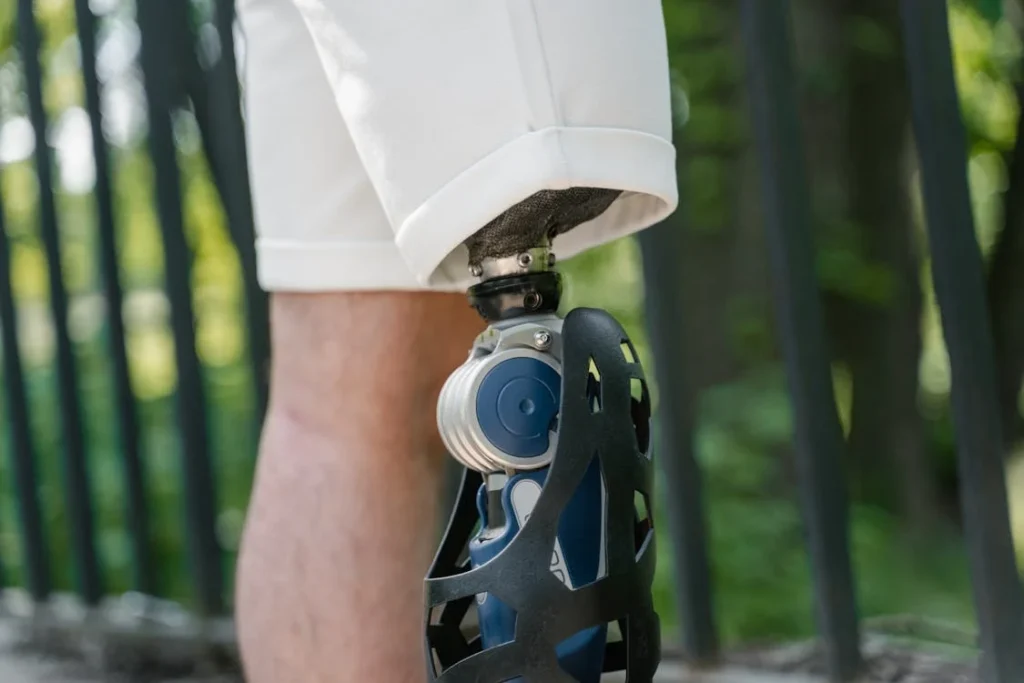
Understanding the Importance of a Custom Socket
A hemipelvectomy prosthetic is unlike any other type of lower-limb prosthetic because it lacks a direct point of attachment to the residual limb.
Instead, the socket must wrap around the pelvis, lower abdomen, and sometimes even part of the ribcage to provide stability. This makes the design of the socket crucial to ensuring both comfort and functionality.
How the Socket Supports the Body
Since there is no remaining leg to bear weight, the socket must distribute pressure across the pelvis and torso.
A poorly designed socket can create pressure points that lead to discomfort, skin irritation, and even long-term tissue damage. A custom-fit socket ensures that weight is spread evenly, reducing strain on any one area.
Stability is another key factor. Without a secure socket, the prosthetic leg can shift unpredictably, making walking difficult and unsafe.
A well-designed socket holds the prosthetic in place, allowing the user to move with more confidence and control.
Balancing Comfort and Functionality
A hemipelvectomy socket must strike a delicate balance between comfort and function. If the socket is too loose, the prosthesis will feel unstable and may cause chafing. If it is too tight, it can restrict movement and cause discomfort.
Customization allows the socket to be shaped specifically for the individual’s body, ensuring a snug but comfortable fit.
This is especially important since no two hemipelvectomy amputees have the same residual anatomy. Some may have a full pelvic girdle, while others may have only part of the pelvis remaining.
Each case requires a unique socket design tailored to the individual’s needs.
Adapting to Different Activities
Hemipelvectomy amputees engage in a variety of activities, from walking and standing to sitting for extended periods.
The socket must accommodate all of these movements without causing discomfort. For instance, when sitting, the design should prevent excessive pressure on the pelvis or abdomen.
When walking, it should allow for smooth weight shifts and stability.
Prosthetists work closely with patients to adjust the fit over time. As the body adapts to using the prosthesis, minor modifications may be needed to maintain comfort and performance.
This ongoing adjustment process ensures that the socket remains effective as the user’s mobility improves.
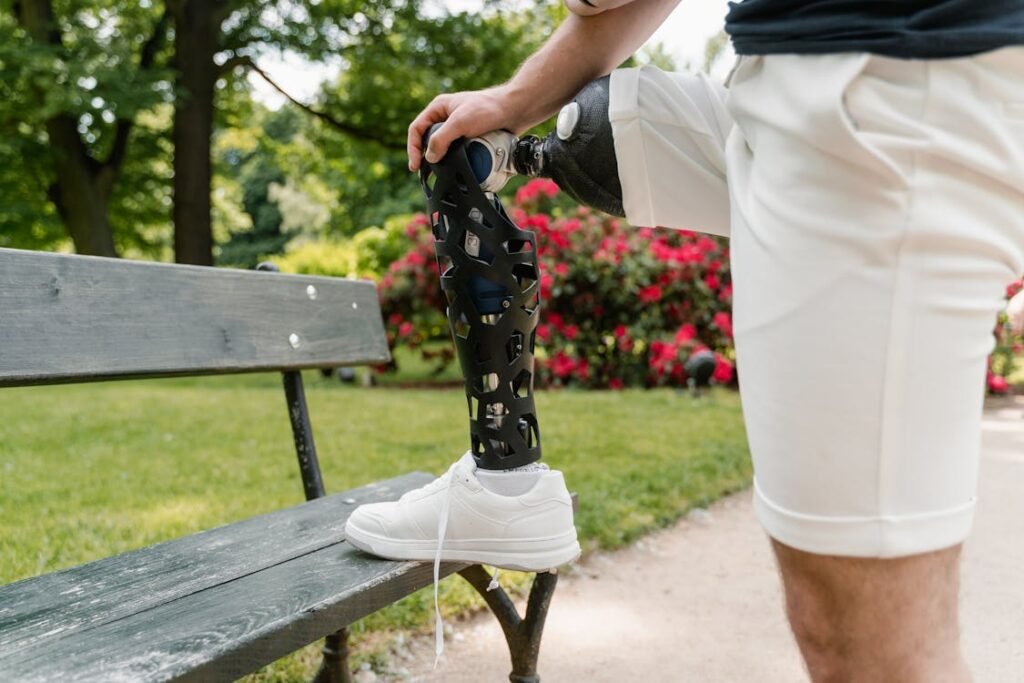
The Science Behind Custom Socket Design
Designing a socket for a hemipelvectomy prosthetic is a complex process that blends biomechanics, material science, and individualized patient needs.
The goal is to create a socket that provides maximum support while allowing freedom of movement.
Achieving this balance requires careful consideration of weight distribution, pressure relief, and alignment with the body’s natural mechanics.
Weight Distribution and Load Bearing
Unlike lower limb prosthetics that rely on a residual limb for weight-bearing, a hemipelvectomy socket must transfer weight across the pelvis, lower torso, and sometimes even the spine.
If the pressure is concentrated in one area, it can cause skin irritation, bruising, and long-term discomfort.
To avoid this, prosthetists use pressure mapping techniques to determine how weight is naturally distributed across the body. These measurements help in designing a socket that spreads the load evenly, reducing strain on any single point.
A well-designed socket ensures that weight is absorbed efficiently, preventing fatigue and discomfort during prolonged use.
Managing Skin and Tissue Health
Because a hemipelvectomy socket covers a large portion of the body, skin health is a critical concern. The constant friction and pressure can lead to sores, rashes, and irritation if not properly managed.
To prevent this, modern sockets use breathable, skin-friendly materials that reduce heat buildup and moisture retention. Soft padding and pressure-relief zones are strategically placed to minimize skin breakdown.
Many sockets also feature flexible inner liners that conform to body movements, reducing friction and improving overall comfort.
The Role of Socket Alignment in Gait Training
The alignment of the socket determines how the prosthetic leg moves in relation to the body. A misaligned socket can cause instability, unnatural gait patterns, and increased energy expenditure.
Precise alignment ensures that the user can walk efficiently, reducing strain on the back and remaining muscles.
During the fitting process, prosthetists conduct gait analysis to fine-tune the socket’s positioning. Adjustments are made to optimize posture, balance, and step symmetry.
This process is essential for ensuring that the user can move naturally and comfortably in various environments.
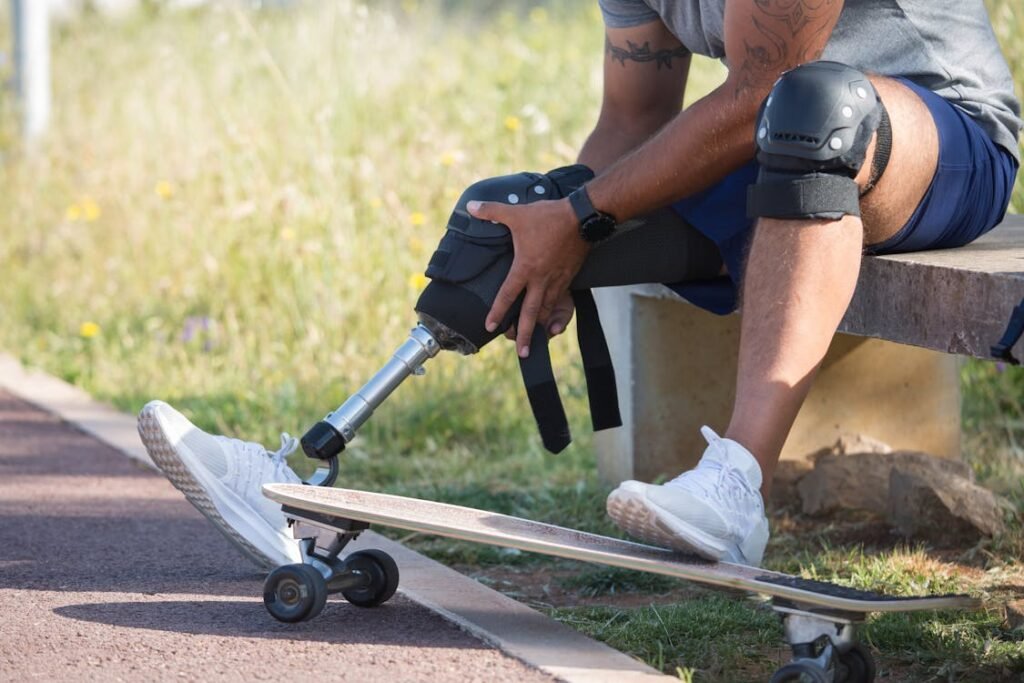
Innovations in Custom Socket Technology
Advancements in prosthetic design are revolutionizing how hemipelvectomy sockets are created and fitted.
Modern materials, digital modeling, and personalized manufacturing techniques are making prosthetics more comfortable, efficient, and adaptable to individual needs.
These innovations are transforming the rehabilitation experience, allowing users to regain mobility with greater ease.
3D Scanning and Digital Modeling for Precision Fit
Traditional socket fabrication relied on plaster molds, which could be time-consuming and sometimes imprecise.
Today, 3D scanning technology allows prosthetists to capture a highly detailed digital model of the user’s residual anatomy. This ensures a perfect fit by accurately mapping pressure points, contours, and areas that need additional support.
With digital modeling, prosthetists can fine-tune the socket’s shape before it is even manufactured. This reduces trial-and-error adjustments and results in a more comfortable and functional fit from the start.
The precision of 3D scanning also makes it easier to replicate a successful design when a replacement socket is needed.
Lightweight and Flexible Materials
One of the biggest improvements in socket technology is the use of advanced lightweight materials. Traditional sockets were often rigid and heavy, making them uncomfortable for extended wear.
Modern sockets use carbon fiber, medical-grade silicone, and thermoplastics, which are both strong and lightweight.
Some new designs also incorporate flexible inner liners that allow for minor movement adjustments while maintaining a secure fit. This improves comfort while reducing the risk of pressure sores and irritation.
A flexible yet supportive socket ensures that the prosthetic moves naturally with the user’s body.
Adjustable and Modular Socket Designs
Since the body changes over time due to weight fluctuations, muscle growth, or changes in posture, an initially well-fitting socket may become uncomfortable.
Modular and adjustable socket systems address this issue by allowing for fine-tuned modifications without requiring an entirely new socket.
Some designs use air bladders or gel inserts that can be inflated or deflated to adjust fit and comfort. Others feature interchangeable components that can be replaced as the user’s needs change.
These innovations help prolong the lifespan of a prosthetic socket and reduce the need for frequent refittings.
Integration with Smart Prosthetic Technology
As prosthetics become more advanced, sockets are being designed to integrate with microprocessor-controlled legs and robotic-assisted walking systems. These high-tech prosthetics rely on sensors to detect movement and adjust accordingly, allowing for a smoother, more natural gait.
For hemipelvectomy amputees, a well-designed socket ensures that these smart systems function properly. A precise fit enhances the connection between the user and the prosthetic, improving responsiveness and reducing the effort required to walk.
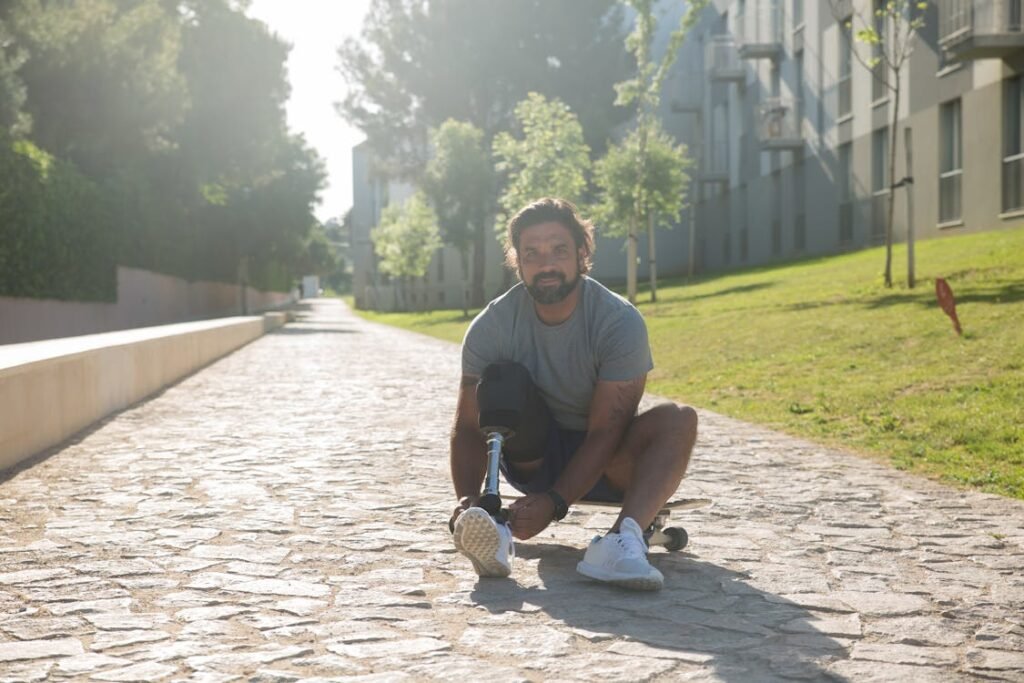
The Impact of Custom Socket Design on Daily Life
A well-designed socket does more than improve mobility—it enhances overall quality of life. Hemipelvectomy amputees face daily challenges that go beyond walking, including sitting comfortably, wearing different types of clothing, and engaging in physical activities.
A custom socket ensures that these everyday experiences are as natural and effortless as possible.
Comfort While Sitting and Moving Throughout the Day
Many prosthetic users experience discomfort when sitting for long periods. A poorly designed socket can create excessive pressure on the pelvis and lower spine, leading to pain and fatigue.
Custom sockets take into account sitting posture, ensuring that weight is evenly distributed and pressure points are minimized.
Flexibility in design also allows users to shift positions easily. Some modern sockets include adjustable padding or contoured edges that adapt to sitting angles, preventing discomfort when transitioning between different activities like driving, working at a desk, or resting.
Clothing and Appearance Considerations
Hemipelvectomy sockets extend higher than traditional lower-limb prosthetics, which can make wearing certain types of clothing challenging.
A custom design ensures that the socket contours naturally to the body, allowing for a better fit under clothing. Some sockets feature streamlined, low-profile designs that reduce bulkiness and improve aesthetics.
For many amputees, the ability to wear normal clothing without discomfort or visibility concerns is an important factor in regaining confidence. Advances in materials and design have made it possible to create sockets that offer both function and discretion.
Enhancing Participation in Physical Activities
Mobility is about more than just walking—it’s about engaging in life fully. A properly designed socket enables users to take part in recreational activities, sports, and outdoor adventures.
Whether it’s cycling, swimming, or even hiking, the right socket provides the support needed for different movements.
Some sockets are designed with modular components that can be swapped out for specific activities. For example, a user may have a day-to-day socket for normal walking and a separate attachment optimized for high-impact sports.
This versatility allows amputees to push their limits without compromising comfort or stability.
Reducing Fatigue and Long-Term Health Issues
An improperly fitted socket can lead to muscle strain, back pain, and joint stress over time. The extra energy required to compensate for an ill-fitting prosthesis can leave users feeling exhausted by the end of the day.
A custom socket eliminates these inefficiencies, making movement more natural and reducing physical strain.
By ensuring that the prosthetic aligns properly with the body’s natural mechanics, users can move with greater ease and less fatigue. This leads to better posture, improved endurance, and a reduced risk of secondary health problems in the long run.
At Robobionics, we understand that a prosthetic is more than just a tool—it’s an essential part of daily life. Our custom socket designs prioritize both function and comfort, ensuring that users can move freely and live confidently.
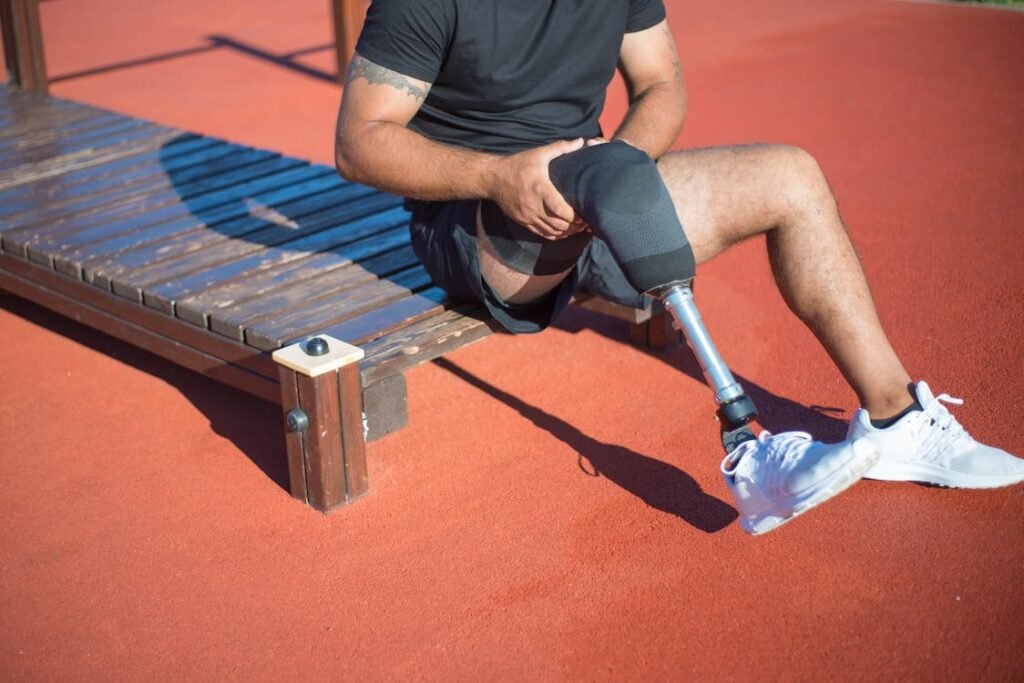
The Process of Creating a Custom Hemipelvectomy Socket
Designing and fitting a custom socket for a hemipelvectomy prosthetic is a detailed, multi-step process. Each stage is essential to ensuring that the prosthetic is comfortable, functional, and suited to the user’s unique needs.
From the initial assessment to the final adjustments, prosthetists work closely with patients to create a socket that enhances mobility and quality of life.
Initial Evaluation and Consultation
The process begins with a thorough evaluation by a prosthetist. During this stage, the prosthetist examines the user’s residual anatomy, posture, and overall body mechanics.
This assessment helps determine how weight should be distributed and what type of socket design will provide the best support.
The patient’s daily activities and goals are also taken into account. Someone who leads an active lifestyle may need a more flexible and dynamic socket, while someone who spends more time sitting may require additional cushioning for comfort.
The key is to create a solution tailored to the individual’s needs.
Digital Scanning and Socket Design
Once the evaluation is complete, advanced scanning technology is used to create a precise digital model of the user’s pelvis and torso. This ensures that the socket fits perfectly, reducing the need for multiple adjustments later.
Using computer-aided design (CAD) software, prosthetists refine the shape of the socket, adjusting contours and pressure points to enhance comfort.
The goal is to ensure an even weight distribution while allowing for natural movement. This step also involves selecting materials that provide the right balance of strength, flexibility, and breathability.
Test Fitting and Adjustments
Before finalizing the socket, a test model—often made from a temporary material—is created. This allows the user to try the socket in real-life conditions and provide feedback on comfort and stability.
During this phase, prosthetists make minor adjustments to improve fit and function. If pressure points are detected, the shape of the socket is modified.
If movement feels restricted, flexibility is increased. This iterative process ensures that by the time the final socket is fabricated, it meets the user’s exact needs.
Fabrication of the Final Socket
Once the test fitting is successful, the final socket is manufactured using durable, lightweight materials. Modern sockets are often made from carbon fiber, medical-grade silicone, or thermoplastics, which provide strength without excessive weight.
Some sockets also feature soft liners for additional comfort, and others include modular components that allow for future adjustments. The final design is polished to ensure a smooth, skin-friendly surface that prevents irritation.
Gait Training and Adaptation
Once the socket is fitted, gait training begins. This involves learning how to balance, shift weight efficiently, and walk with a natural rhythm.
Since hemipelvectomy amputees rely on their core and upper body for movement, training focuses on building strength and coordination.
During this phase, prosthetists continue to monitor the user’s comfort and make any necessary fine-tuning adjustments.
Over time, as the user adapts to the prosthetic, additional refinements may be needed to ensure long-term comfort and performance.
At Robobionics, we take pride in our precise and patient-centered approach to custom socket design. By combining cutting-edge technology with expert craftsmanship, we ensure that every hemipelvectomy amputee receives a prosthetic that feels like a natural extension of their body.
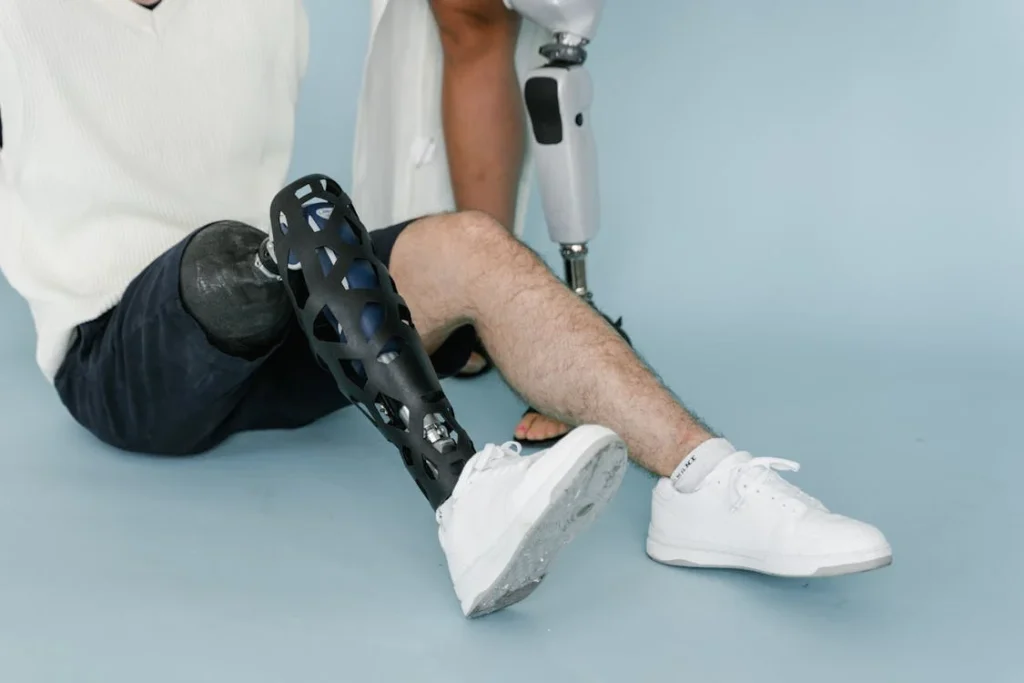
The Future of Custom Socket Design for Hemipelvectomy Prosthetics
Prosthetic technology continues to evolve, and with it, the design and functionality of custom sockets are improving. Innovations in materials, artificial intelligence, and biomechanics are shaping the future of prosthetics, making them more adaptive, comfortable, and efficient.
Smart Sockets with Sensor Technology
One of the most promising advancements in socket design is the integration of smart sensors. These sensors can monitor pressure points, temperature, and movement in real time.
By collecting data on how the socket interacts with the body, prosthetists can make precise adjustments to improve fit and prevent discomfort.
Some smart sockets are even equipped with automated pressure adjustments. These systems detect when a user is experiencing excess pressure in certain areas and modify the fit accordingly.
This dynamic adaptation ensures continuous comfort, especially for individuals who engage in a variety of physical activities.
3D-Printed Custom Sockets
The introduction of 3D printing in prosthetics is revolutionizing the way custom sockets are made. Traditional socket fabrication can take weeks and requires multiple fittings.
With 3D printing, prosthetists can create highly customized sockets faster, reducing wait times for users.
3D-printed sockets also offer greater design flexibility. They can be tailored to each individual’s exact anatomical structure with pinpoint precision.
This reduces pressure points and enhances overall comfort, leading to a more natural and efficient walking experience.
Adaptive and Modular Designs
Future socket designs will focus on adaptability, allowing users to switch between different modes for various activities. A single socket may have interchangeable components that adjust for walking, sitting, or high-impact activities like running.
This modular approach makes prosthetics more versatile, ensuring that users do not have to compromise on comfort or function in different situations. Adjustable sockets will also make it easier to accommodate changes in body shape and weight over time.
AI-Powered Biomechanical Optimization
Artificial intelligence is beginning to play a role in prosthetic design by analyzing movement patterns and optimizing socket shape.
AI-driven software can simulate how a user will move with a certain socket design, predicting pressure points and areas that may require more support.
By using AI in the design phase, prosthetists can create sockets that provide the most efficient weight distribution and biomechanical alignment.
This not only improves comfort but also reduces the energy required to walk, allowing for more natural movement.
Personalized Prosthetic Skins and Aesthetics
Beyond function, the future of socket design will also focus on personalization. New materials and techniques will allow users to customize the look and feel of their prosthetics.
Lightweight, skin-like coverings, textured surfaces, and aesthetic designs will give users more choices in how their prosthetic appears.
This shift toward personalization empowers amputees, allowing them to embrace their prosthetics as an extension of themselves rather than just a medical device. The ability to express individuality through design enhances confidence and self-image.
A Future Focused on Comfort and Mobility
As technology continues to advance, hemipelvectomy amputees will benefit from more sophisticated, user-friendly socket designs. The focus will always be on improving comfort, efficiency, and adaptability.
By combining smart technology, innovative materials, and biomechanical precision, the future of prosthetics is set to provide an even greater quality of life for users.
At Robobionics, we stay at the forefront of these innovations, ensuring that our custom socket designs are built for the future.
Our mission is to provide every user with a prosthetic that feels natural, moves effortlessly, and supports their lifestyle with confidence.
Conclusion
The role of custom socket design in hemipelvectomy prosthetics cannot be overstated. It is the foundation of comfort, stability, and mobility. A well-designed socket ensures proper weight distribution, prevents pressure sores, and enhances movement, allowing users to walk with confidence and ease.
With advancements in digital scanning, 3D printing, and smart technology, socket design is becoming more precise and adaptable. These innovations not only improve fit and function but also give users greater control over their mobility and quality of life.
At Robobionics, we are committed to delivering state-of-the-art prosthetic solutions that prioritize both comfort and performance. Our custom sockets are designed with the user’s unique anatomy and lifestyle in mind, ensuring a seamless integration between the body and the prosthesis.
If you or a loved one is looking for a customized hemipelvectomy prosthetic, we are here to help. Contact Robobionics today to learn how our innovative prosthetic solutions can restore independence and enhance everyday life.



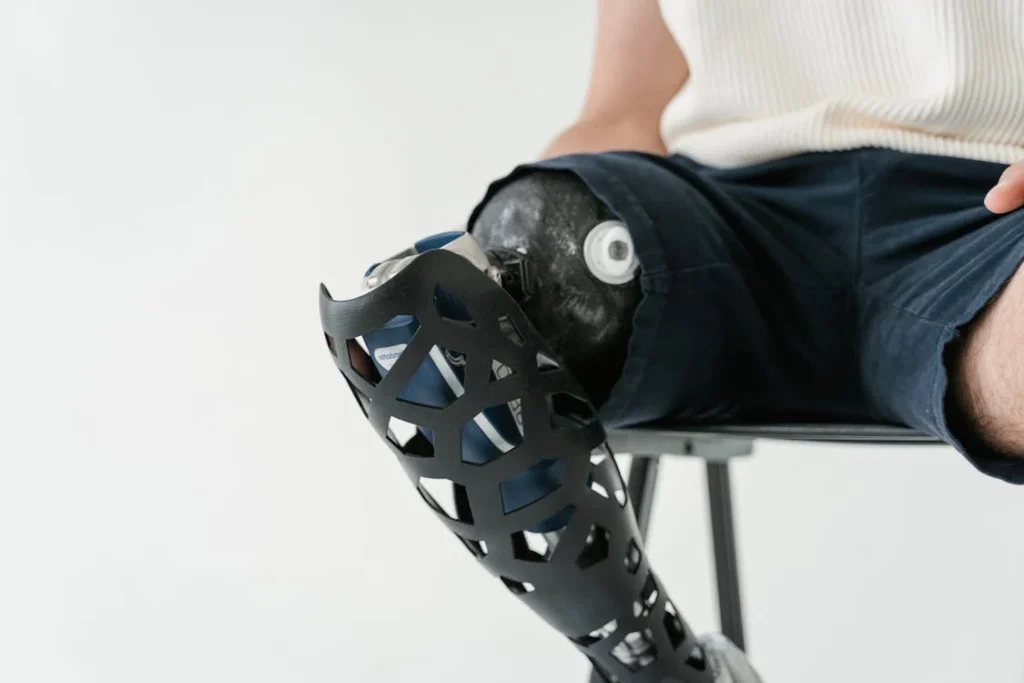
The information in these articles on the hemipelvectomy patient proved to be informative but the pictures included were only of above the knee amputees which is deceiving. It would be most useful if examples are shown of a true hemipelvectomy prosthetic.
Thank you